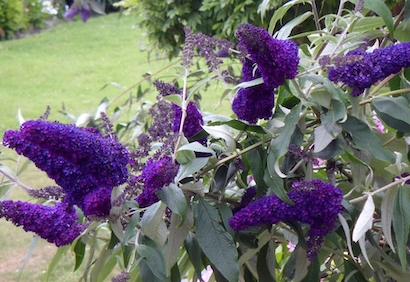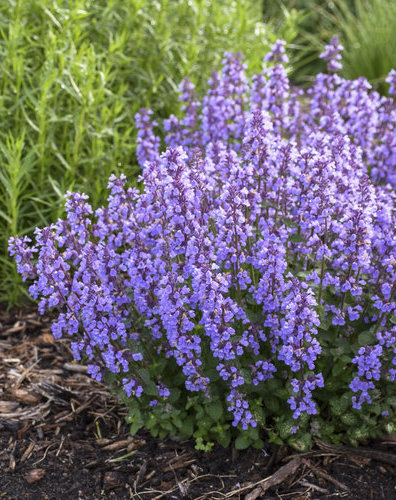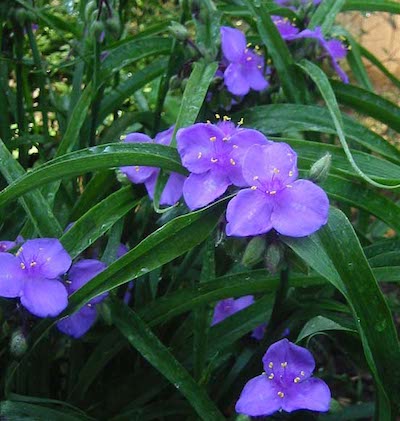The Zoo Garden
By Linda Puff, Fairfax Master Gardener
 We love gardening, although every idea we have does not always work out as planned. We find gardening relaxing, therapeutic, enjoyable, but most of all fun. I was reading an article on children’s gardens: veggie, train, gnome and fairy gardens and the fun learning experience for children and adults. The garden can be as simple as a few containers on your porch or an elaborate bed in the yard. Reading further a Zoo Garden was mentioned. Did you know there are thousands of plants with an animal as part of its common name? What a great way to teach children of all ages to be avid gardeners, allowing them to have their own garden patch. So grab the kids and grandkids, or neighbors and friends, and ask them to join in creating a Zoo Garden.
We love gardening, although every idea we have does not always work out as planned. We find gardening relaxing, therapeutic, enjoyable, but most of all fun. I was reading an article on children’s gardens: veggie, train, gnome and fairy gardens and the fun learning experience for children and adults. The garden can be as simple as a few containers on your porch or an elaborate bed in the yard. Reading further a Zoo Garden was mentioned. Did you know there are thousands of plants with an animal as part of its common name? What a great way to teach children of all ages to be avid gardeners, allowing them to have their own garden patch. So grab the kids and grandkids, or neighbors and friends, and ask them to join in creating a Zoo Garden.
I thought about what I was reading and I have a round galvanized tub in my backyard with a miniature house, mailbox, wishing well, outhouse, bench, wheelbarrow and elves working in their garden. I don’t have space for a Zoo Garden, but I did take a walk through my yard and found that I have DOGwoods, a CRABapple, BUTTERFLY bushes, CARDINAL flowers, ELEPHANT’S ears, SPIDERwort, TIGER lily, BUTTERFLY weed and BEE balm. Now, all I have to do is create signage for my plants. More about that later.

Butterfly Bush
The best time to plant a Zoo Garden is in the spring or fall. So, there is time to gather the thoughts of all those working on the garden preparation and the plants and finishing touches they would like to see in the garden. The decision may be to redesign a current garden bed or prepare a new bed for the Zoo Garden. Browsing through seed and plant catalogs can help choose a theme for the garden and visiting a local nursery or a botanical garden can help in the plant selection. Once plants are chosen, making a design of the garden on paper and taking into consideration the height and width of the plants when fully grown will prove helpful. Including the child or children in the garden preparation is highly recommended. Bestowing the title of Zookeeper on the child or children lets them know how important their input is in the creation of the Zoo Garden.
Prepare the soil in the bed, take a soil sample and have it tested. Just like the zoo animals have proper homes and food, animal plants need to be well cared for and given a good place to live. CATtails prefer moist, soggy soil, a SPIDER lily prefers well-drained soil, OSTRICH ferns like a rich moist shady area and LAMB’s ears like to grow in the sun or a little shade in well-drained soil. Remember that not all of the zoo animal plants are suitable for all plant hardiness zones or growing conditions. Select plants according to what will grow in your location. If you pair a sun worshipping plant with a shade loving plant, nobody will be happy. Read plant labels and take them seriously.
Here are a few suggestions for animal plants in your Zoo Garden. SnapDRAGON, SPIDERwort, and LARKspur are annuals and like the sun. BEE Balm, CATmint, HENS and CHICKS and MONKEY Grass are perennials and like the sun. Solomon’s SEAL likes the shade and LEOPARD’s Bane likes part shade. Remember there are many animal plants (annuals, perennials, bulbs, grasses) to choose from.
The stories about how the animal plants got their names are also fun. It could be because part of the flower looks like the animal’s head or because of the color of the plant. The CARDINAL flower is named for the cardinal red color of its flower. The GOAT’s beard has lots of creamy-white flowers shaped like Christmas trees. The animal plant got its name because if you turn the flower clusters upside down, they look like the white, pointy beard of a mountain goat. TICKseed has small seeds that resemble ticks, thus the name. ZEBRA grass has horizontal gold stripes on the leaves, resembling the stripes on a zebra. The PIGGYback plant got its name because its new little leaves grow right on top of its big leaves. It looks like the little ones are riding piggyback. You can squeeze the sides of the snapDRAGON flower and it will open its mouth like a dragon roaring. I could go on and on.

Catmint
If there isn’t room for a garden bed, different sized containers can be used on the balcony or patio for a Zoo Garden. There are many houseplants that our Zookeeper can choose for an inside Zoo Garden. PANDA BEAR, ZEBRA, DONKEY’s tail, PIGGYback and SNAKE plants are just a few to consider.
Once your Zoo Garden is planted, it is time for a different type of creativity, choosing the name for your Zoo Garden and how to decorate. The zoo is decorated in many ways adding to its interest, and the same can be done to the Animal Plant Zoo Garden. It should be a fun place. Just like the zoo is fenced to keep its animals in, the Animal Plant Zoo Garden can be fenced to protect the animal plants using decorative fencing or cinderblocks/rocks. If a SPIDER plant is in the garden, a web can be placed nearby. A SNAKE plant can have a small rubber snake on the ground. CATmint can have a sign saying “CATS Welcome.” Recycled materials, pine cones, twigs, sea shells and miniature garden tools can be used to build or decorate. Different sized rocks or wood stakes can be used to make the signage, drawing the animals using paints, Sharpies, clip art and using Mod Podge (glue/sealer). For instance, take a wood stake and draw a BEE and print balm below, and one sign is made. Use the Mod Podge to seal it. Planters on your balcony or patio and houseplants can be decorated using small stakes, sea shells or wine bottle corks for signage. There are endless possibilities.

Spiderwort
Once the habitat is right for your animal plants, the Zookeeper can walk through the Zoo Garden every day and talk to the plants, check to see if they have enough water and make sure they are not too hot or too cold. Of course, you can pull weeds and fertilize every now and then. Knowing your plants well will provide important information for their care. The Zookeeper can offer a tour of the Zoo Garden to visitors, and a map of the garden can be made and handed out as a memento during the tour.
As mentioned a number of times in this article, the important thing is to have fun. The whole idea of gardening with children is to involve them, to teach, to learn, to spend time together and to make memories. Take pictures of your garden and make an album of your creation from planting day on.
Resources
• The Zoo Garden: Forty Animal-Named Plants Families Can Grow Together by Chris Hastings (1997)
• The Endless Possibilities of a Children’s Garden, Kyra Back, Proven Winners
• Plants with Animal Names: Tips for Creating A Zoo Flower Garden with Kids, Anne Baley, Gardening
Know How